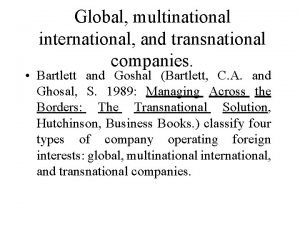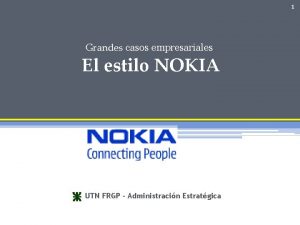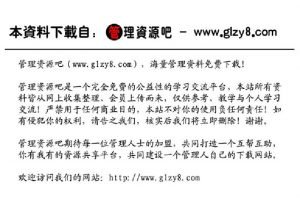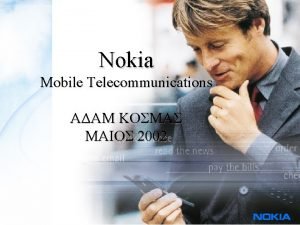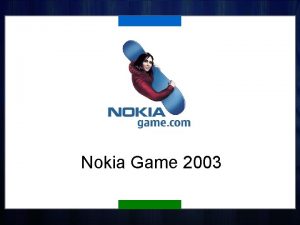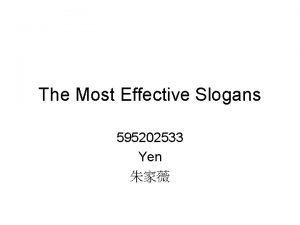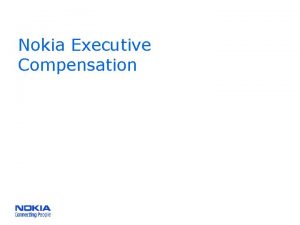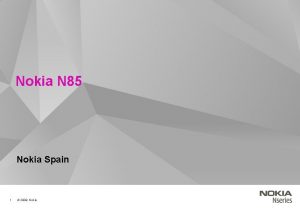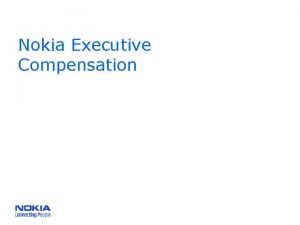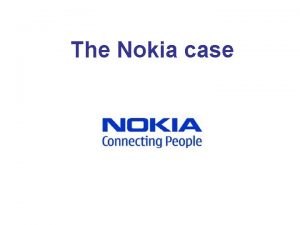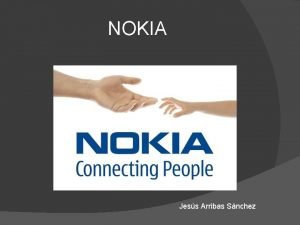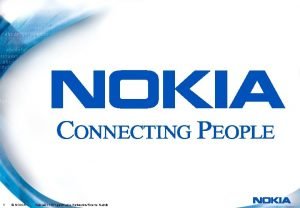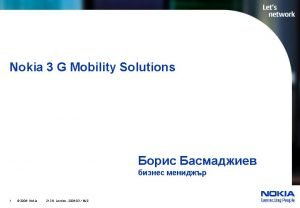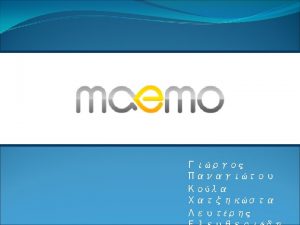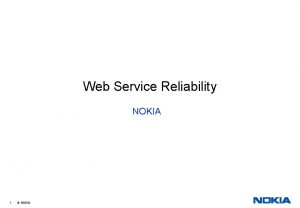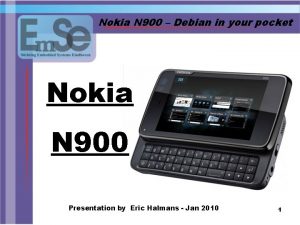Nokia Nokia company Nokia is a leader in



















- Slides: 19

Nokia

Nokia company Nokia is a leader in the fields of network infrastructure, location-based technologies and advanced technologies. Headquartered in Espoo, Finland, and with operations around the world, Nokia invests in the technologies of the future. Today, we have three strong businesses: Nokia Networks, our network infrastructure business; HERE, our location intelligence business; and Nokia Technologies, which is focused on technology development and intellectual property rights activities. Through these businesses, we have a global presence, employing around 55, 000 people. We are also a major investor in R&D, with investment through the three businesses amounting to more than EUR 2. 5 billion in 2013. Until recently, Nokia also was a key participant in the mobile devices market through its Devices & Services business. In September 2013, Nokia announced an agreement with Microsoft whereby it would sell substantially all of its Devices & Services business to Microsoft. The transaction was completed on April 25, 2014.


Nokia story



Fredrik Idestam was born on October 28 th 1838. He is currently employed by Nokia. He founded Nokia. He had occupations including engineering services business, businessperson and engineer. He died in April 1916 at the age of 77 years and 6 months old.

In 1967, we took our current form as Nokia Corporation as a result of the merger of Idestam’s Nokia AB, Finnish Rubber Works, a manufacturer of rubber boots, tires and other rubber products founded in 1898, and Finnish Cable Works Ltd, a manufacturer of telephone and power cables founded in 1912. The new Nokia Corporation had five businesses: rubber, cable, forestry, electronics and power generation.



Nokia first entered the telecommunications equipment market in 1960 when an electronics department was established at Finnish Cable Works to concentrate on the production of radiotransmission equipment. Regulatory and technological reforms have played a role in our success. Deregulation of the European telecommunications industries since the late 1980 s has stimulated competition and boosted customer demand.


In 1982, we introduced the first fully-digital local telephone exchange in Europe, and, in the same year, the world’s first car phone for the Nordic Mobile Telephone analog standard. The technological breakthrough of GSM, which made more efficient use of frequencies and had greater capacity in addition to high-quality sound, was followed by the European resolution in 1987 to adopt GSM as the European digital standard by July 1, 1991. The first GSM call was made with a Nokia phone over the Nokia-built network of a Finnish operator called Radiolinja in 1991, and in the same year Nokia won contracts to supply GSM networks in other European countries. In the early 1990 s, we made a strategic decision to make telecommunications our core business, with the goal of establishing leadership in every major global market. Basic industry and non-telecommunications operations—including paper, personal computer, rubber, footwear, chemicals, power plant, cable, aluminum and television businesses—were divested between 1989 and 1996. By 1998, Nokia was the world leader in mobile phones, a position it enjoyed for more than a decade.

1987 1991 1999 1997/1998

In 2006, Nokia, which had already been investing in its mapping capabilities for many years, acquired Gate 5, a mapping software specialist, and then in 2008 NAVTEQ, the US-based maker of digital mapping and navigational software. Today, Nokia offers leading location services through the HERE business and brand, launched in 2012. In 2007, Nokia combined its telecoms infrastructure operations with those of Siemens to form a joint venture named Nokia Siemens Networks. NSN has become a leading global provider of telecommunications infrastructure, with a focus on offering innovative mobile broadband technology and services. 2006 2007

In 2011, Nokia joined forces with Microsoft to strengthen its position in the highly competitive smartphone market. Nokia adopted the Windows Phone operating system for smart devices and through their strategic partnership Nokia and Microsoft set about establishing an alternative ecosystem to rival i. OS and Android. In 2011, Nokia also started to make a number of changes to its operations and company culture that would in the course of the next two years lead to shortened product development times, improved product quality and better responsiveness to market demand. In 2013, Nokia moved to reinvent itself with two transformative transactions. The first was the purchase of Siemens’ stake in NSN, which was nearing the end of a deep restructuring and remarkable transformation. The second was the announcement of the sale of substantially all of Nokia’s Devices & Services business to Microsoft. The Microsoft transaction was originally announced on September 3, 2013 and was completed on April 25, 2014.


Structure optimized for growth and innovation Nokia has a simple and clear operational governance model, designed to facilitate innovation and growth. Our three businesses report to the Nokia President and Chief Executive Officer, Rajeev Suri, who has full accountability for the performance of the company. HERE and Nokia Technologies each have a single leader reporting to him. To ensure efficiency and simplicity, Mr. Suri assumes direct control of the Nokia Networks business and key Nokia Networks leaders report to him. The primary operative decision-making body for the company is the Nokia Group Leadership Team. The Group Leadership Team is responsible for Group level matters, including the company strategy and overall business portfolio. For financial reporting purposes, Nokia has four reportable segments: Mobile Broadband Global Services within Nokia Networks; HERE; and Nokia Technologies. The Nokia Group Leadership team.

values The following values guide our work: Respect We treat each other with respect and we work hard to earn it from others. Achievement We work together to deliver superior results and win in the marketplace. Renewal We invest to develop our skills and grow our business. Challenge We are never complacent and perpetually question the status quo.
 Transformational leader and transactional leader
Transformational leader and transactional leader Company leader
Company leader Partnership vs limited company
Partnership vs limited company What type of company was the virginia company
What type of company was the virginia company Winding up vs liquidation
Winding up vs liquidation Holdings company meaning
Holdings company meaning Transnational multinational global international
Transnational multinational global international Nokia frgp
Nokia frgp Nokia scaled agile framework
Nokia scaled agile framework Nokia 1999
Nokia 1999 ürün yaşam eğrisi nedir
ürün yaşam eğrisi nedir Nokia diamond
Nokia diamond Nokia burning platform
Nokia burning platform Nokia promotion
Nokia promotion Nokia game
Nokia game Nokia bts types
Nokia bts types Nokia vrrp
Nokia vrrp Nokia competitor analysis
Nokia competitor analysis Nokia slogans
Nokia slogans 2700 c
2700 c






